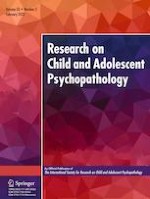20-11-2020
Effects of Parent Emotion Socialization on the Neurobiology Underlying Adolescent Emotion Processing: A Multimethod fMRI Study
Gepubliceerd in: Research on Child and Adolescent Psychopathology | Uitgave 2/2022
Log in om toegang te krijgenAbstract
Parents’ emotion socialization (ES) practices impact socioemotional development throughout adolescence. Little is known, however, regarding the neurobiology underlying these effects. This study used functional magnetic resonance imaging (fMRI) to examine how parent ES practices relate to adolescent brain function during emotion processing. Thirty-three adolescents (ages 14–16) reported on ES practices of a focal parent (primarily mothers) using the Emotions as a Child (EAC) Scale. Adolescents also completed a conflict discussion task with this parent, and parents’ statements were coded for emotional valence. Adolescents performed two fMRI tasks: a standard emotion processing (EP) task (n = 32) and the Testing Emotional Attunement and Mutuality (TEAM) task (n = 27). The EP task consisted of viewing emotional pictures and either reacting naturally or using cognitive reappraisal to regulate emotional responses. The TEAM task was performed with the parent and included trials during which adolescents were shown that their parent made an error, costing the dyad $5. Parent negative verbalizations during the conflict discussion were associated with greater activity in the thalamus during the emotion reactivity condition of the EP task and in the thalamus, superior medial and superior frontal gyri, anterior insula, and dorsolateral prefrontal cortex during the costly error condition of the TEAM task. Unsupportive ES was associated with greater activity in the supplementary motor area and less activity in the paracentral gyrus and amygdala during the costly error condition of the TEAM task. This study supports the premise that ES influences adolescents’ emotion-related neural processing, particularly when using ecologically valid tasks in social contexts.
